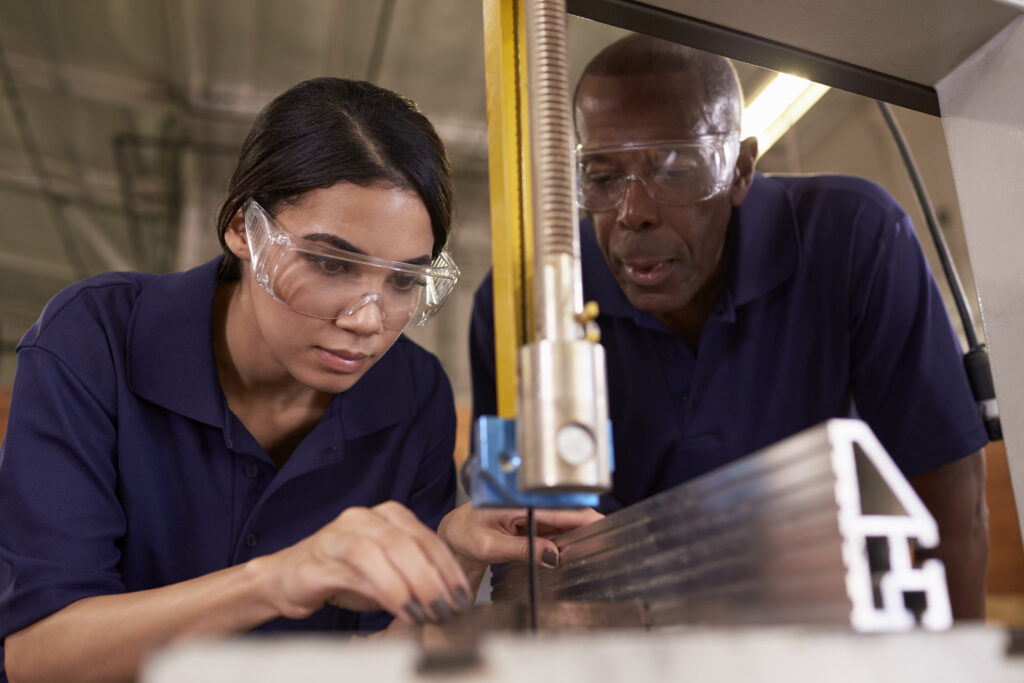
The pandemic hit communities of color hard. The need to clear pathways for these groups to enter manufacturing is more urgent than ever.
In recent months, much of our nation’s attention has turned yet again to the deeply rooted racism that has contaminated nearly every aspect of our society, converging with the COVID-19 pandemic and its economic consequences.
When it comes to manufacturing, we are most definitively at a crossroads. We can either work toward to building a more diverse and equitable workforce, or maintain the status quo.
As America starts out on the long road to economic recovery, there lies an opportunity for our country to not only get Americans back to work, but to create avenues to stable, middle-class careers from which Black and Brown workers have been excluded. In particular, advanced manufacturing apprenticeship programs offer a wealth of opportunities for workers of color to find entry into these family-supporting jobs.
But far more needs to be done now to connect workers of color with these programs.
During a virtual discussion hosted by the Working for American Institute (WAI) and Coalition of Black Trade Unionists (CBTU) on Monday, experts and labor leaders came together to examine the urgent need for increased access to advanced manufacturing apprenticeships in communities of color.
The shift to a more diverse workforce is rapidly becoming a reality, but equity along with that diversity requires strategic efforts to improve employment prospects for workers of color.
According to a 2016 Economic Policy Institute report, people of color will account for the majority of the working class in the U.S. by 2032. However, their jobs often offer lower pay and fewer benefits.
One strategy for connecting Black and Brown workers with better paying jobs? Expanding access to apprenticeships.
“Apprenticeship can play a key role in our future economic recovery,” said Livia Lam, senior fellow and director of Workforce Development at the Center for American Progress. “Simply, apprenticeships produce good paying jobs, and it remains a proven workforce strategy for attracting, preparing and upscaling talent for all kinds of jobs, especially in growing industries.”
Greater diversity within manufacturing especially holds promise to buoy disadvantaged communities, as apprenticeship program graduates “can expect to earn an average of about $60,000 a year,” Lam stated.
Unfortunately, these opportunities are too often predominately enjoyed by White workers, a Center for American Progress report revealed. In 2018, only 10.73% of Black workers were reported to have participated in apprenticeship programs while 63.39% of participants were reported as white.
“[E]ven though these apprenticeship programs are intended and have the potential to boost the workforce by increasing earnings and preparing workers for the jobs of the future, occupational segregation by race and gender is a reality in apprenticeship programs,” Lam said.
As the U.S. begins what is sure to be a long recovery from the pandemic, we risk losing the opportunity to embrace a more diverse and equitable workforce. Inaction will only further cement economic inequities as the COVID-19 pandemic has disproportionately impacted people of color. Worse still, that economic damage could inflict lasting scars as temporary layoffs turn permanent.
Without a thoughtful approach to reigniting America’s economic engine, a K-shaped recovery will not only disadvantage the working class, but also people of color.
“We’ve been putting this on the shelf for years,” said Terrence Melvin, CBTU president, WAI board member, and NY State AFL-CIO secretary-treasurer. “We cannot allow this moment to slip by as it has in the past. … We’ve got to come together like never before — and this is Black and White, Yellow and Red. We’ve got to come together as brothers and sisters in this country and say that the country is going to live up to the creed that it was made on.”
Recovery from the economic disaster that COVID-19 has unleashed upon America is possible, but must be accomplished by the lifting up of all workers. Bolstering outreach from advanced manufacturing apprenticeship programs to communities of color can help accomplish just that.
For more insight into the value of manufacturing for workers of color, check out our series on Black workers.
